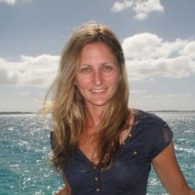Meet the red handfish – Albie, Ariel, Benni, Hector and Hippocrates. The list goes on. Each has been sponsored by members of the public keen to help the critically endangered species. Albie was named by Albuera Street Primary School students, Ariel by the dive club Tasmanian Mermaids.
It’s difficult to look through the photos of the named fish on the handfish.org.au/meet-the-fish website and not form an attachment. Especially when you learn that there are just 100 red handfish left on the planet.
“They are literally the last remaining, but every dollar raised goes straight back into monitoring, raising awareness, and working towards protecting them,” said University of Tasmania Institute for Marine and Antarctic Studies (IMAS) researcher Dr Jemina Stuart-Smith.
Scientists like Jemina are following individual handfish observed in the wild, and reporting on re-sightings over time. “We use unique markings to tell individuals apart – track movement and changes in size, as well as a whole suite of information that will give insight into their ecology and biology,” she said.
The Name a Handfish fundraising initiative of the Handfish Conservation Project raises $1000 per red handfish, supporting the species, which is threatened by habitat loss.
“It’s been really well received; we’ve now got over 40 fish that have been sponsored, the majority by local Tasmanians,” Jemina said.
“The funding has been used for ongoing monitoring of the wild populations; removal of sea urchins, which are one of the causes of the barrens that are impacting handfish habitat; and, in combination with other funding, we’ve started some seaweed translocation trials to our barren areas to try and recover the habitat there,” she said.
Jemina adds philanthropy has also helped scientists build a successful captive population to try to secure the species’ future.
“We’ve now got eight adults in captivity. We have about 90 ‘teenagers’ … and a clutch of newborn babies that are less than half a centimetre long.
“They are adorable,” Jemina said. “Everyone gets surprised that the babies hatch out looking exactly like the adults.
“We feel the responsibility heavily,” Jemina said, adding that just ten years ago, local divers noticed huge declines and feared the worst.
“I remember going out to do those surveys and saying, 'Okay, so who’s doing something about this?' And it was like, 'Oh, well, nobody is. There’s no funding.'
“We’re now expanding into a new room at IMAS. We’ve got water running through all the tanks for the first time, which gives us more space, and greater temperature and light control. But it also allows us to set up some bigger tanks as habitat classrooms, so the young fish will get to experience and learn some of those life skills that they’ll need in the wild.”
Main image: Red handfish in the wild by J. Stuart-Smith
Read more stories from Impact 2022.



